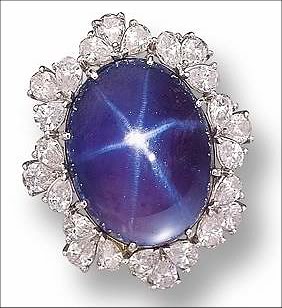Sapphire gems dazzle and attract the eye like no other. But what is it and where does it come from? What magical properties does it contain – and more importantly, is a sapphire pendant, necklace or other piece of jewelry in your budget range? Here’s a few tidbits to school you on this rich and intense gem:
- Sapphire is the official birthstone for the month of September.
- Sapphire is given as a gem for the 5th, 23rd and 45th wedding anniversaries while a star sapphire is given on the 65th wedding anniversary.
- Sapphire is the non-red variety of corundum (the red variety of corundum is ruby). A 9.0 on the Mohs scale of hardness, sapphire is the second hardest natural mineral.
- Blue is by far the most popular color for sapphires, but they can be almost any color, including yellow, green, white, colorless, pink, orange, brown, and purple. Padparadscha is the name for a rare orange-pink variety of sapphire and has a higher value than blue sapphires.
- Sapphires with inclusions of tiny, rutile needles exhibit an optical property called asterism. This is the star shaped effect seen in star sapphires and is usually only seen in cabochon cuts.
- Star sapphires usually have six ray stars, but twelve ray stars are also known. Rarely, when sapphires are cut en cabochon, they can demonstrate a cat’s eye effect. This effect displays a thin band of light down the center of the stone and is known as chatoyancy.
- Heating colorless and very pale blue sapphires to high temperatures is done to give them an intense blue color. This treatment can also improve the clarity of the stones by removing tiny inclusions.
- A rare variety of sapphire, known as color changing sapphire, exhibits different colors in different light. A color change sapphire is blue in natural light, and violet in artificial light. A similar effect is also seen in alexandrite.
- Sapphire was first created synthetically in 1902 and is hard to distinguish from natural sapphires except by gemologists. Lab grown sapphires range in price and smaller stones are frequently used in less expensive jewelry.
Source: Bernadine Fine Art Jewelry
Sapphires can radically range in price but are generally more affordable than diamonds. Contact us if you’re interested in a sapphire engagement ring or a sapphire pendant necklace or even a sapphire broach. Sapphires are guaranteed to catch all eyes, so be prepared to draw a lot of attention.
Here are some possibilities:



